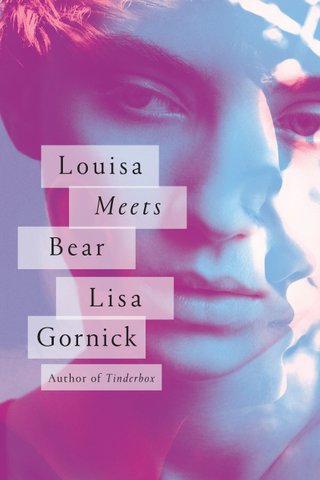
Young Love…and Its Aftermath
YZM: William Callahan, aka Bear, is Catholic; Louisa, his first love, and later his wife, Ilana Green, are Jewish. Was this intentional and if so, what are you suggesting about such relationships?
LG: Louisa’s mother was Jewish, but she grew up in a secular household and hasn’t heard Hebrew since her mother’s funeral, when her grandparents insisted that a rabbi officiate. Ilana’s primary associations to Judaism are also linked to her mother’s death and the terrifying sound of the first clump of dirt on her mother’s coffin. What becomes a pivotal conflict between Louisa and Bear is not that she is Jewish and he is Catholic but that he is a believer and she is not. Bear was bequeathed by his Catholic father a foundational belief that what happens is God’s will, whereas Louisa’s father, a molecular geneticist and an implied atheist, has taught her that the ethical level to which one strives requires choice. This comes to a head between them in the wake of a terrible death that Bear declares to have been God’s will and that Louisa views as the expression of nature’s brutality.
YZM: Like Ilana, you were a therapist for many years and the protagonist of your last novel, Tinderbox, was also a therapist. How have you drawn on your own experience to shape these characters?
LG: I recently wrote a piece for the New York Times “Couch” column on why I’ve never written about my patients. That said, I see the world through a psychological lens: in particular, the struggle those of us privileged to not have our lives shaped by the need to attain food and shelter and safety undergo to surmount unconscious forces and claim authorship of our lives. As you mention, in this book and in both of my prior novels, Tinderbox and A Private Sorcery, there are major characters who are therapists. Many writers draw upon work they’ve done, be it as doctors or lawyers or farmers or soldiers. For me, the work I know best, aside from being a writer and mother, is as a psychotherapist—work, that like my character Ilana, I find complex and soulful and fascinating in a bottomless way.
YZM: How do you see the development of the two main characters, Louisa and Bear, over time? Could or should these two have stayed together?
LG: The fiction that I find most interesting creates characters and situations that are sufficiently real and complex that readers can have differing opinions about the choices made. By example, I’m thinking of the ending of Wallace Stegner’s Crossing to Safety when Charity, on her deathbed, refuses to allow her grief-struck husband to accompany her to the hospital because she believes it will help him move on if he is not with her at her death. What I love about this ending is that Stegner leaves the reader to decide whether Charity has acted in a saintly or sadistic manner.
YZM: What are your thoughts on the novel versus stories? What are the respective merits of each and what can one achieve that perhaps the other cannot?
LG: The novel seems to be under attack on all fronts these days: from memoirs that read like novels, from novels that read like memoirs, from fiction writers who proclaim that they’ve lost all interest in the form, and then by books of linked stories like Elisabeth Strout’s wonderful Olive Kitteridge and Jennifer Egan’s brilliant A Visit from the Goon Squad and, I suppose now, Louisa Meets Bear, that might be viewed as “novels in fragments.” Literary forms are fluid. The essential issue for me is whether the primary motivation of the author is to produce a commodity for the marketplace or to express something of import—in which case he or she has my attention no matter the length or genre of the work.



